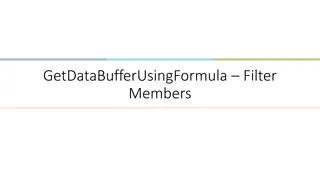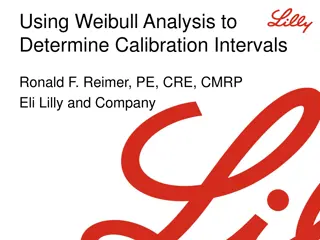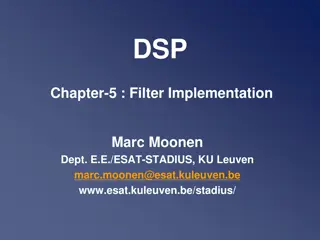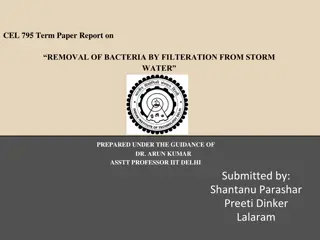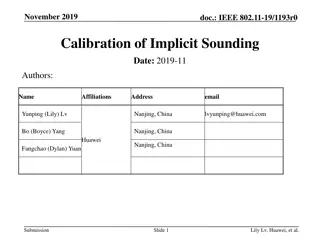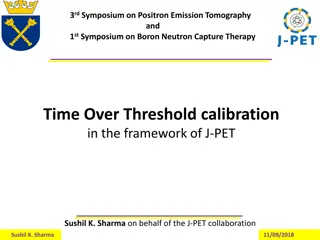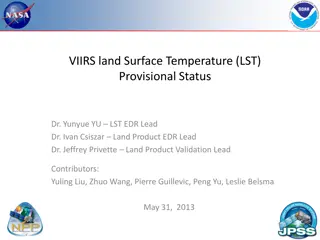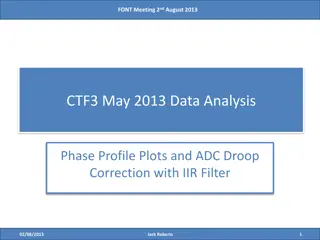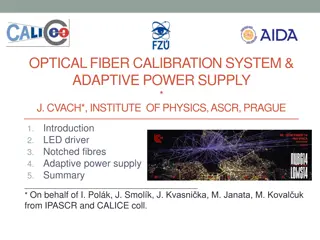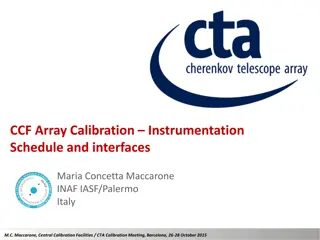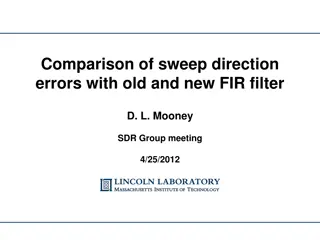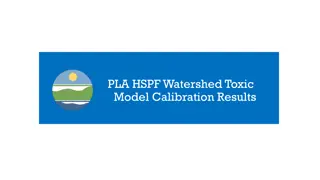Optimizing SG Filter Parameters for Power Calibration in Experimental Setup
In this investigation, the aim is to find the optimal SG filter parameters to minimize uncertainty in power calibration while avoiding overfitting. Analyzing power calibration measurements and applying SG filter techniques, the process involves comparing different parameters to enhance filter performance. Through methodical analysis and experimentation, the study aims to reduce uncertainties introduced by noise and improve the accuracy of power/system temperature measurements.
Download Presentation

Please find below an Image/Link to download the presentation.
The content on the website is provided AS IS for your information and personal use only. It may not be sold, licensed, or shared on other websites without obtaining consent from the author. Download presentation by click this link. If you encounter any issues during the download, it is possible that the publisher has removed the file from their server.
E N D
Presentation Transcript
SG filter parmaeters investigation for power caibration
Power calibration Power calibration measurements (noise diode off, noise diode on) made before each data run These are used to calibrate the electronic chain connected to the booster+LNA Applying the power calibration factor converts the raw power measured by the spectrum analyzer into power/system temperature received from booster+LNA These measurements are too noisy, introduce significant uncertainties in the final axion limit Apply SG filter to smooth the measurements and reduce the uncertainty Need to find SG filter parameters such that it minimizes the uncertainty while not overfitting the baseline No analytical solutions exist for this problem, we need to go find the solution by comparing the performance of different parameters
23_weekend run Run Bfield (T) Frequency of bf peak Time B-on/off 23_weekend 1.57 19.217 60/5
Method Using reduced-data-mean100.h5 file SG filter is applied to the calibration factor to calculate a baseline and then residuals are calculated (the same method applied to data) SG filter order = 3 and varying window size by 11 to 80011 in steps of 5000 SG filter order and window size length have a lot of degenerate values Order = 3 is a bit arbitrary but it is not too important as long as we get a goof filter performance Maximum window size of 80000 for total 335000 points Plotting the mean and std of calibration factor residuals for all runs
2024-02-23_weekend An illustration of the residuals and their histogram
SG filter order I tried to see the effect of the order and it seems negligible. Very similar results for a few runs that I tried
23_weekend run calibration Order = 4 reaches saturation much faster than order = 3 Order = 5 reaches saturation even faster
2024-02-23_weekend For order = 3, the behavior is stable until the window size of 40000 There is a positive bias in the mean
Backup Results for 200 rebin file
2024-02-23_weekend Covering a large range upto a window size of 20000 After 10000 window size, both starts to diverge
2024-02-27_magnettest The same pattern for another run Expect similar pattern for all runs
To Do Do the residual calculations for noise on and noise off, transmitted power measurements individually Use 100 rebin file 23 weekend run Why mean is always positive ? Show overfitting, stable, underfitting regions Send Johannes this plot




